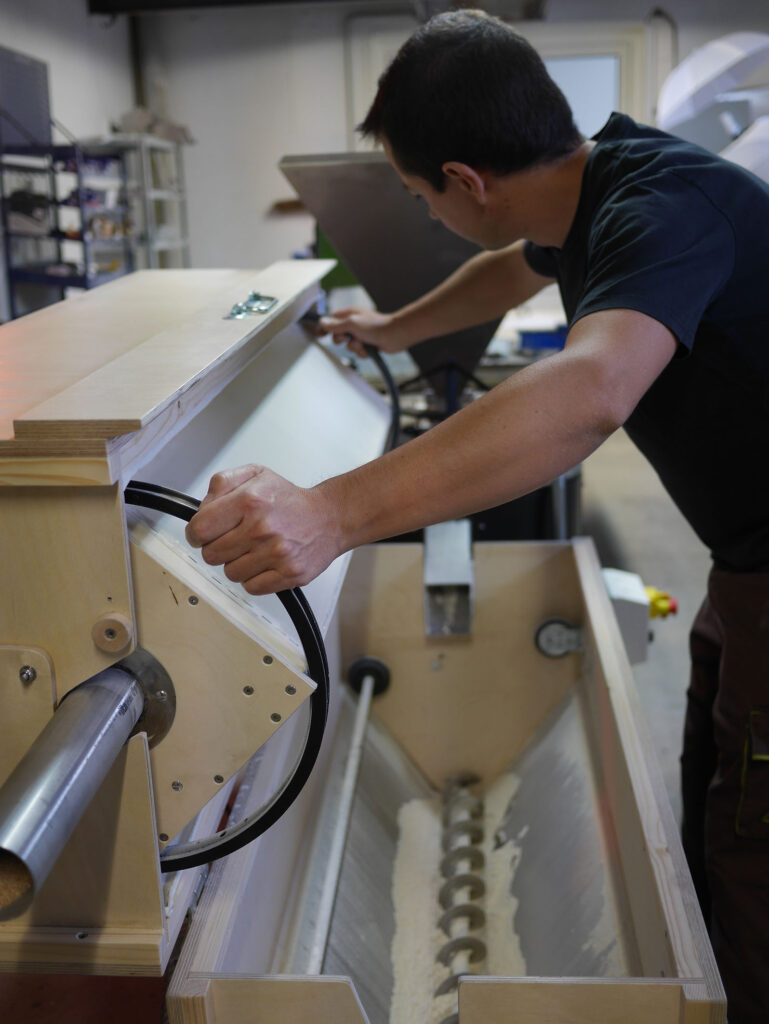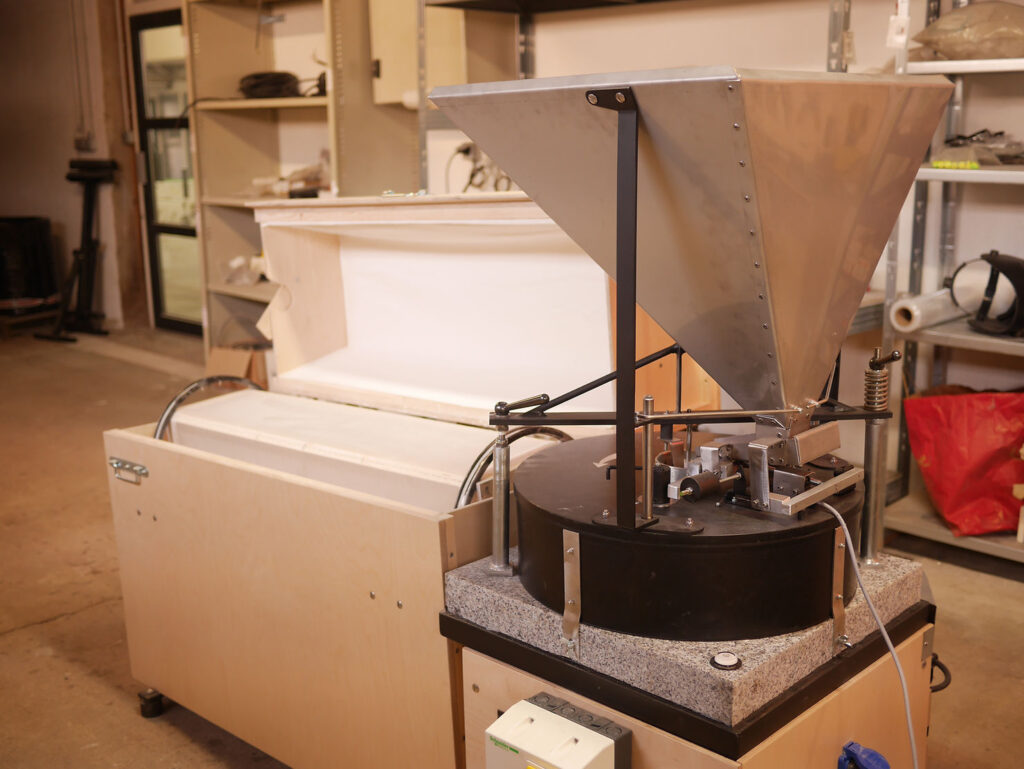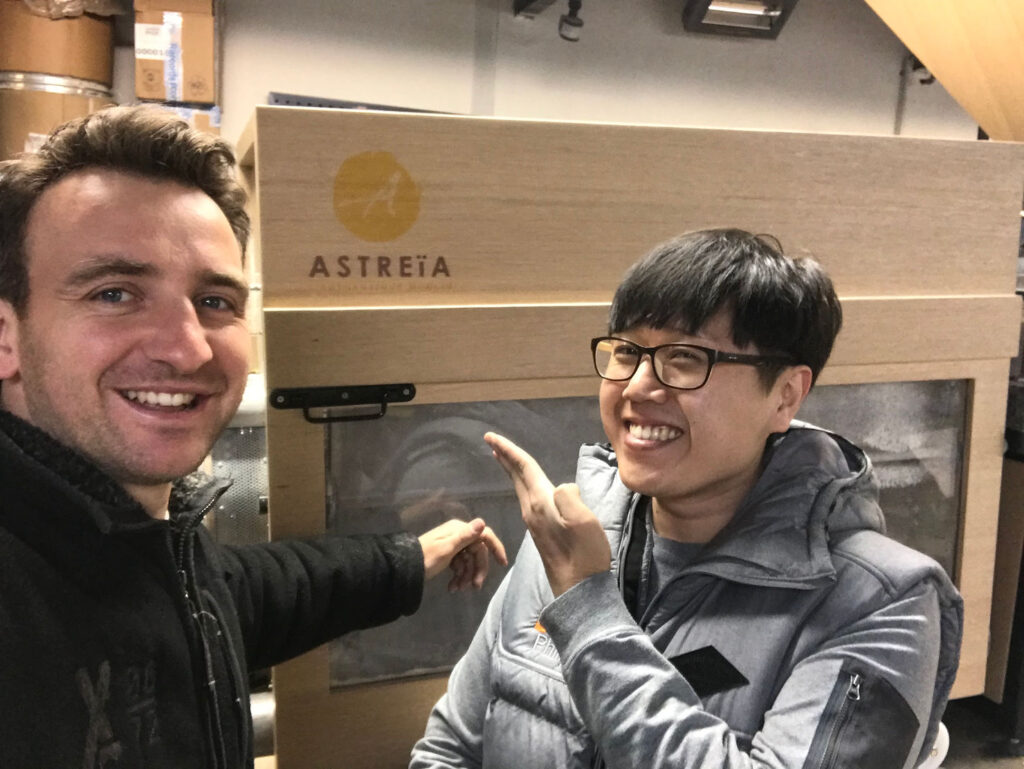I’ve always said to myself that when it’s my turn, I’ll give my colleagues as much information as possible to help them! Thanks to Astréïa, today is the day!
The ideal location for your farm/holding
It’s important to realise that there is no ideal layout, as it depends on :
- your current farm
- your objectives
- other activities you carry out on site
- future activities you are planning
- public access
- your cereals
I know this is not what you would like to hear or read.
That’s why, when Astréïa looks at your project, and if you want us to, we take the time to discuss it with you so that we can give you the advice best suited to YOUR project, to YOUR specific needs. Our advice and the transmission of our expertise are important to us and are part of our job.
We take this time over the phone, together, before the purchase.
Moulin Astrié: ideal positioning of the structure
The Astrié mill must be positioned :
- on a flat slab
- on a masonry support
- with ground anchor bolts
Why do you ask? We take stock!
Moulin Astrié: why on a flat slab?
It is important to use a spirit level to measure the flatness of the slab to ensure that the mill is perfectly level.
If this is not the case, the grinding wheels will work and will not be able to compensate for the level, even with a slight difference in level.
The rotating grinding wheel on the Astrié mill is based on an oscillating system. In fact, if the slab is not flat, the oscillating system will transmit a slight deviation to the grain.
As a result, the yield and the flow of grain through the millstones will not be at all optimum.
Why on a flat slab? To ensure that the grain unwinds properly and the extraction rate is maintained.

Moulin Astrié: why on a masonry support?
I’m often asked this question in order to position the mill on a wooden structure, for example. The answer is simple!
The mill, through the movement of the millstones and the sieve, creates a series of movements and vibrations of its own.
On a non-masonry, non-rigid support, these vibrations will be transmitted to the ground, then to the structure of the building, which will reproduce and duplicate them again in the mill. This has a direct effect on the oscillating movement of the millstones, and therefore on the unrolling of the grain, and therefore on the quality of the flour.
These ‘return’ vibrations will therefore affect the existing building and, in turn, the natural movement of the millstones and sieve.
It is therefore imperative that the mill is built on a masonry support (breezeblock, joists, planks, hemming, concrete, etc.) because it is rigid, linked to the slab and heavy. In this way, no elasticity will be possible and the vibrations emitted by the mill will not be transmitted back to it.
Why a masonry support? To avoid transmitting the natural vibrations of the mill to your building and therefore to the mill itself, which would affect the way the seeds roll and the quality of the flour.

Moulin Astrié: ground anchor bolts
This is a feature that is often forgotten during installation. For reasons of lack of time, forgetfulness or to be able to move the mill.
These anchor bolts in your flat masonry slab will be necessary to prevent the mill’s natural vibrations from affecting the automatic bagging system in particular.
It is perfectly possible not to anchor the mill to the ground.
It won’t escape, of course.
However, this slim setting means you can leave the grinder running while you work on another task without worrying that the grinding wheels will need adjusting in the long run.
It may be possible to have a wooden frame if your structure prevents a masonry support for specific technical reasons. In this case, care must be taken to properly brace the structure and anchor it to the ground using anchor bolts.
The aim? To evacuate the vibrations so that the mill’s vibrations are not transmitted back to it via the structure of the frame, which will itself be vibrating.
Why anchor bolts to the ground? To connect the mill to its masonry support. Without them, there is a risk that the support will vibrate significantly, and the milling process will be disrupted as a result.
What makes the Astréïa Mill different from other Astrié mills?
It’s important to choose your Astrié mill manufacturer carefully. That’s why we recommend that you meet several criteria:
total respect for the Astrié invention
compliance with hygiene standards
compliance with safety standards
To continue reading the criteria: What makes the Astréïa mill different from other Astrié mills?



